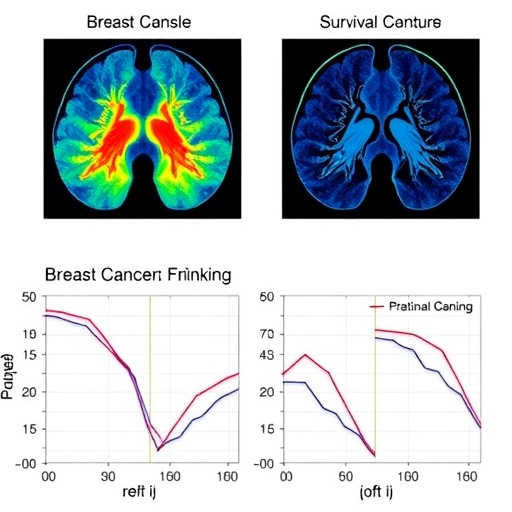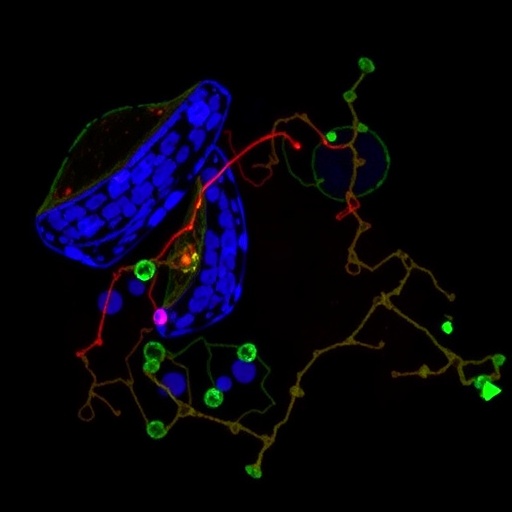A protein, called inositol-requiring enzyme 1 — IRE1 — may serve as a key driver in a series of molecular interactions that can both promote and, paradoxically, inhibit tumors in certain types of cancers, such as non-melanoma skin cancers, according to a team of molecular biologists. They add that this pathway's dual power may make it a tempting target for future research on the design of new types of anti-cancer therapeutics.
"What this is really about is learning the basic biology of cancer to discover new ways to target the disease," said Adam Glick, professor of veterinary and biomedical sciences, Penn State. "The more we know about the molecular circuitry — and the mutations and genetics of cancer — the more we can design drugs that specifically target cancer cells without harming normal cells."
According to the researchers, IRE1 is regulated by a protein known to be critical in human cancer, called Ras. In normal cells, Ras helps manage cell growth and division, but when it is mutated it can cause many different types of human cancer. However, in a study with skin cells from mice, the researchers found that mutated or oncogenic Ras causes a buildup of incorrectly folded proteins in a region of the cell, called the endoplasmic reticulum, or ER. The researchers found that these incorrectly folded proteins activate IRE1 as the cell tries to reduce this unfolded stress response.
"We still don't know how Ras is causing the stress response, whether because the cells are more proliferative, or because of other unknown factors outside or inside the cell, but the end result seems to be increased unfolded proteins in the ER," said Glick.
According to the researchers, when IRE1 is activated it can help reduce ER stress by degrading messenger RNAs that encode proteins in the ER. However, IRE1 also causes expressions of proteins that properly fix unfolded proteins.
"While this action of IRE1 helps cells survive and may promote cancer development, one of the targets for this messenger RNA degradation pathway actually encodes an oncogenic protein, called Id1," said Glick. "It turns out that IRE1 has both pro-oncogenic and tumor-inhibiting capabilities that, by degrading this message, can counteract the tumor-promoting effects of oncogenic Ras. The end result is cells don't continue to proliferate and undergo a process called senescence, or accelerated aging. Basically, they die."
This is the first time that a connection between Ras and a dual role of IRE1 has been made in cancer, said Nicholas Blazanin, a former graduate student in Glick's laboratory and currently a postdoctoral researcher at the University of Texas at Austin.
"Discovering a potentially important new mechanism of cancer has been extremely gratifying," said Blazanin, who served as the paper's first author.
The researchers, who present their findings in the current issue of Proceedings of the National Academy of Sciences, said the power of both promoting and inhibiting tumors makes IRE1 a promising focus for future anti-cancer research.
"What this said to us is that possibly, by manipulating IRE1 we can potentially drive tumor cells to self-terminate," said Glick.
The researchers hope future research may shine a light on the mechanism in other forms of cancer, as well.
"We're starting to test the hypotheses that we generated both on skin cancer and in lung cancer models because Ras is a really important driver of lung cancer in humans," said Glick.
###
Glick and Blazanin also collaborated with Jeongin Son, doctoral student in molecular, cellular, and integrative biosciences; Alayna Craig-Lucas, post baccalaureate research fellow, National Institutes of Health; Christian John, research assistant, University of California-Davis; Kyle Breech, medical technologist, Geisinger Health; and Michael E. Podolsky, graduate student in veterinary and biomedical sciences.
The Department of Veterinary and Biomedical Sciences, the Penn State Institutes of Energy and the Environment, the Huck Life Sciences, The Elsa U. Pardee Foundation and the National Institutes of Health supported this work.
Media Contact
Matt Swayne
[email protected]
814-865-9481
@penn_state
http://live.psu.edu
http://news.psu.edu/story/479407/2017/08/28/research/pathways-power-boost-halt-tumors-may-be-promising-cancer-therapy




